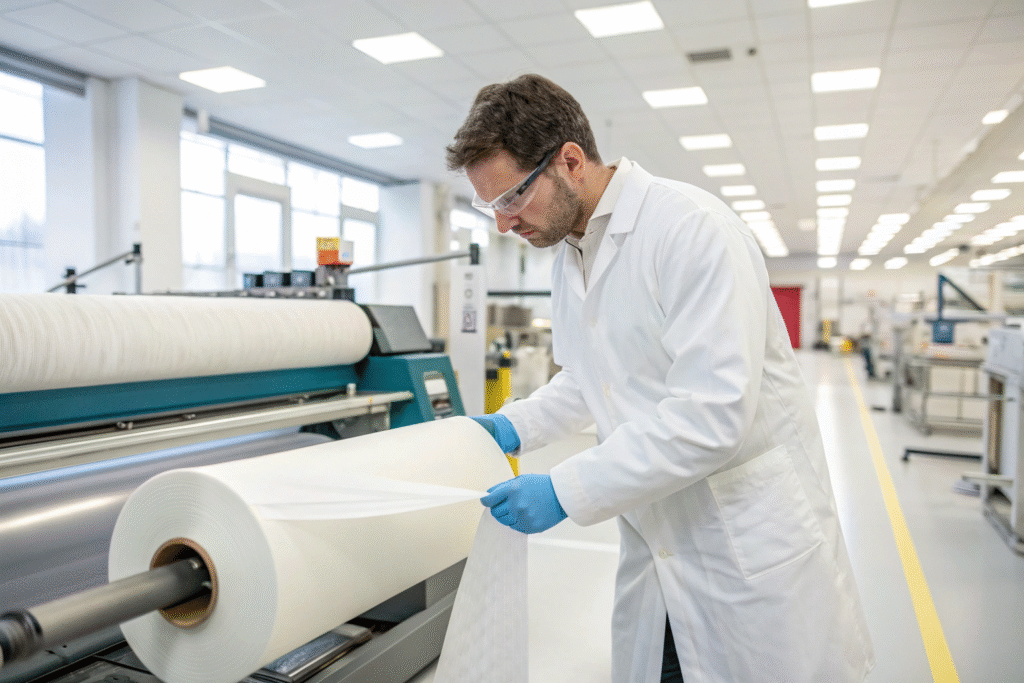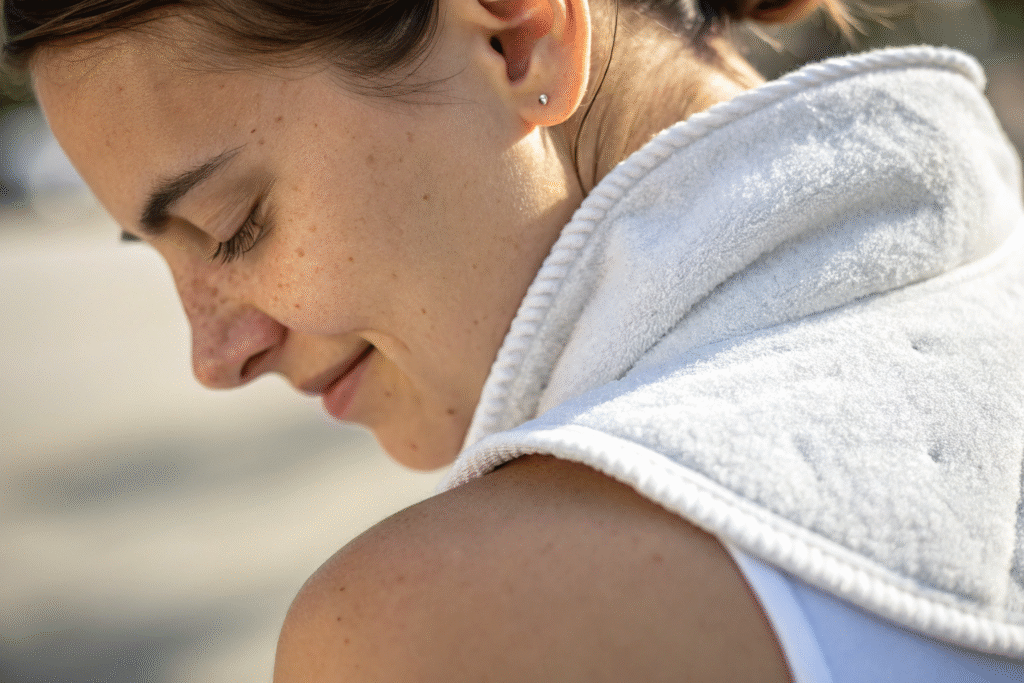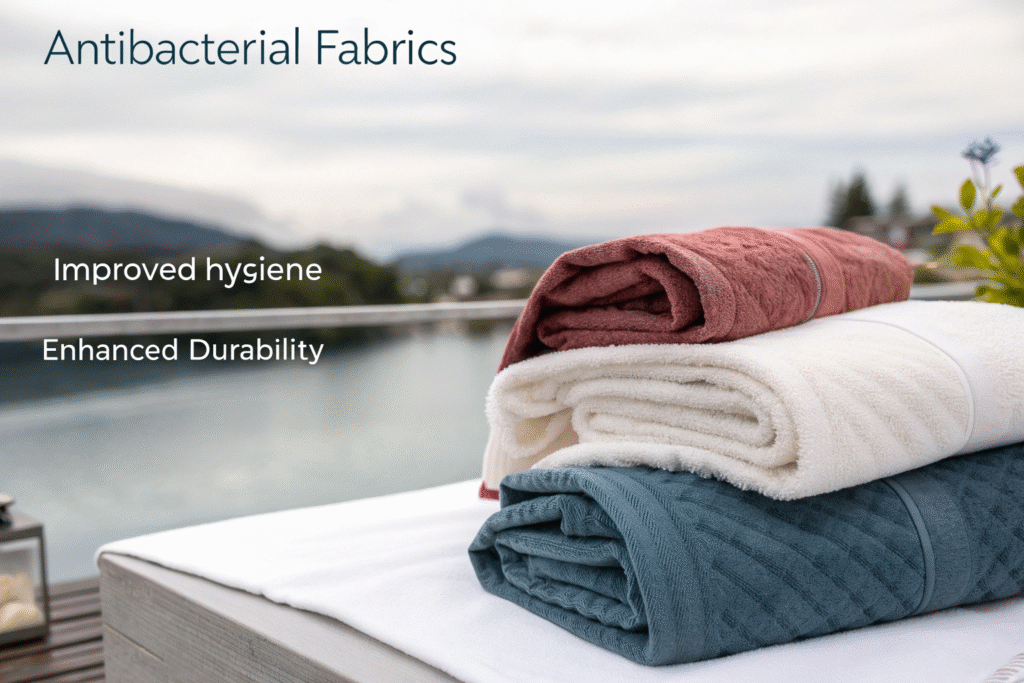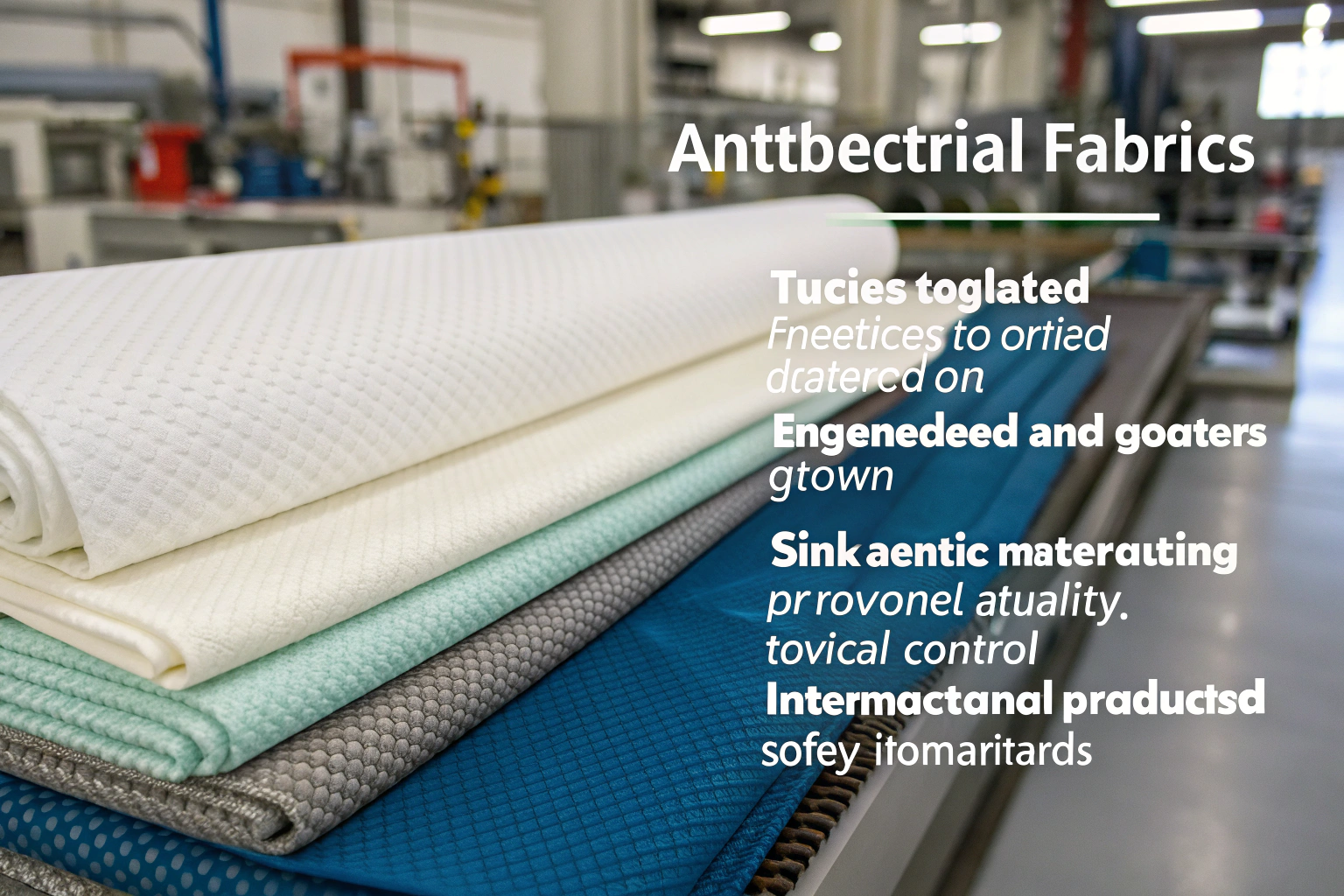As a fabric supplier with over two decades in the textile industry, I get this question a lot. Customers from the US and Europe are increasingly looking for functional fabrics that offer more than just aesthetics. They want performance and safety, especially for items worn close to the skin. Understanding the technology behind antibacterial fabrics is key to making informed purchasing decisions.
Antibacterial fabrics are textiles that have been treated or engineered to inhibit the growth of bacteria, preventing odors and material degradation. They are generally safe for skin when produced using approved, non-toxic agents and compliant with international safety standards. The key lies in the specific technology used and the quality control measures in place during manufacturing.
Let's dive deeper into the science, safety, and practical benefits of these innovative textiles, ensuring you have all the information you need for your next sourcing project.
How is antibacterial fabric technology applied?
The application of antibacterial technology is a precise science. It's not a one-size-fits-all process. The method used determines the fabric's durability, effectiveness, and ultimately, its safety. We see two primary application methods in our CNAS-certified lab: built-in and finish-based.

What are the main types of antibacterial treatments?
There are two main categories. The first is built-in antibacterial agents. These are added to the polymer solution before the fiber is even spun. For synthetic fibers like polyester or nylon, antimicrobial compounds like silver ions are integrated directly into the molten polymer. This creates a fiber with inherent, long-lasting antibacterial properties. The second category is finish-based treatments. These are applied to the surface of the fabric after it is woven or knitted. This is common for natural fibers like cotton. The fabric is passed through a chemical bath where the antimicrobial agent bonds to the fabric's surface. Each method has its strengths, and the choice depends on the final use of the fabric. For high-performance sportswear, a built-in treatment might be better. For everyday home textiles, a finish could be sufficient.
How does the application process ensure durability?
Durability is a major concern. A treatment that washes out after a few cycles is useless. For built-in treatments, the durability is excellent because the property is part of the fiber itself. It lasts for the lifetime of the garment. For finish-based treatments, the key is the bonding process. High-quality application uses covalent bonding, which creates a strong chemical link between the fabric and the antimicrobial agent. This ensures the finish can withstand repeated washing and wear. We test this extensively in our lab, subjecting fabrics to over 50 home launderings to verify the antibacterial efficacy remains strong. This rigorous testing is part of our end-to-end quality control, ensuring every meter of fabric we ship meets the promised performance standards.
Is antibacterial fabric truly safe for direct skin contact?
Safety is the number one question we receive from buyers like you. The short answer is yes, but it depends entirely on the substances used and the manufacturer's compliance with global regulations. As a supplier for major brands, we never compromise on safety.

What safety certifications should I look for?
Always look for independent, third-party lab certifications. The most important ones are Oeko-Tex Standard 100 and REACH compliance. Oeko-Tex certifies that the fabric is free from harmful levels of more than 100 substances known to be risky for human health. It's a globally recognized safety standard for textiles. For the US market, ensuring compliance with the Consumer Product Safety Commission (CPSC) guidelines is also crucial. These certifications are not just paperwork. They are proof that the fabric has been tested for skin-friendliness. In our facility, every batch of antibacterial fabric is tested and comes with a certification from our CNAS-accredited lab, giving you and your customers peace of mind.
Can antibacterial treatments cause skin irritation?
This is a valid concern. Low-quality treatments using harsh chemicals like triclosan have raised health flags in the past. However, modern, safe antibacterial technologies use skin-friendly agents. Silver-ion technology, for example, is widely used and considered non-irritating. It is physically disruptive to bacteria but inert and harmless to human skin cells. Another safe alternative is chitosan, a natural polymer derived from shellfish. The key is to work with a supplier that is transparent about the agents they use. We provide full Material Safety Data Sheets (MSDS) and composition details for all our functional fabrics, ensuring you have all the information needed to assure your customers of product safety.
What are the key benefits for clothing and brands?
Beyond the basic function, antibacterial fabrics offer tangible benefits that can elevate a brand's value proposition. These advantages directly address the pain points of today's consumers, making your products more desirable.

How does antibacterial fabric enhance product longevity?
It fights the two main enemies of textiles: odor and decay. Bacteria on fabric don't just cause smell; they also break down the fibers. This is especially true for natural fibers like cotton. By inhibiting bacterial growth, the fabric stays stronger for longer. It resists the deterioration that leads to thinning, tearing, and loss of strength. This means the garment maintains its integrity and appearance through many more washes and wears. For brands, this translates into higher perceived quality and customer satisfaction, as the products you source will have a longer functional lifespan.
Why is odor resistance a major market advantage?
Odor resistance is a powerful selling point. It's a feature that consumers can directly experience. In categories like sportswear, casual wear, and socks, odor control is a top priority. A garment that stays fresher longer between washes offers immense convenience. This functionality allows brands to command a higher price point and build a reputation for innovation. We've helped numerous startups and established brands integrate our moisture-wicking and odor-resistant fabrics into their lines, resulting in positive customer feedback and repeat business. This performance edge is crucial in today's competitive apparel market.
What should you consider when sourcing antibacterial fabric?
Sourcing functional fabric requires a more detailed approach than standard materials. You need a partner who can guarantee not just the price, but the performance, safety, and reliability of the supply chain.

How important is supplier verification and testing?
It is the most critical step. Don't just take a supplier's word for it. Insist on seeing the test reports. A reputable supplier will have no problem providing documentation from accredited labs. Verify the scope of their in-house testing capabilities. For instance, our on-site CNAS-certified lab allows us to conduct rigorous tests for antibacterial efficacy against standards like AATCC 100 and ISO 20743. We also perform tests for colorfastness, shrinkage, and composition. This level of quality control ensures that the fabric you receive consistently performs as expected, batch after batch, protecting your brand from costly recalls or customer complaints.
What are the logistics and cost implications?
Antibacterial fabrics often fall under the category of "functional textiles," which can have different shipping and cost structures. However, a key advantage of working with a integrated supplier like us is streamlined logistics. We handle everything from production to packaging and shipping, consolidating your order to reduce complexity and cost. A significant point for our US clients is that our fabrics are not affected by US tariffs on Chinese goods, as we classify and ship them under compliant categories. This provides a major cost advantage. Furthermore, our agile supply chain enables quick sample development and stable bulk delivery, ensuring your production schedules are not disrupted by delays.
Conclusion
Antibacterial fabrics represent a smart fusion of textile science and consumer needs. They are engineered for performance through proven technologies, and when sourced responsibly from certified suppliers, they are perfectly safe for skin contact. The benefits—from odor control and enhanced durability to the market appeal for your brand—are clear and substantial. The key to success lies in partnering with a supplier that prioritizes transparent communication, rigorous testing, and end-to-end quality control.
If you are looking to develop a new line of sportswear, children's clothing, or any apparel where freshness and longevity are key, integrating high-quality antibacterial fabric is a strategic move. We at Fumao Textiles are here to be your reliable partner in this process. From providing certified fabric samples to managing the entire production and shipping process, we make sourcing simple and secure. For a direct conversation about how we can help with your specific project, please reach out to our Business Director, Elaine. She and her team are ready to assist you in creating exceptional products. Contact Elaine at elaine@fumaoclothing.com to start the conversation today.










